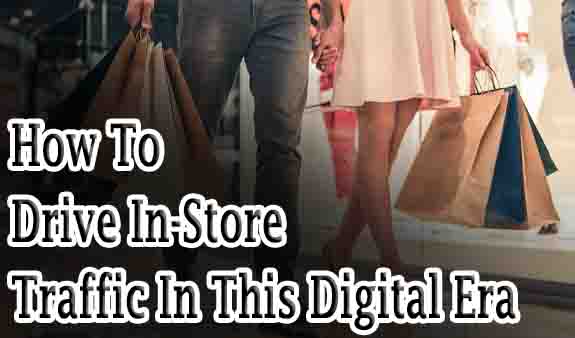There are countless tools and techniques to pick from when it comes to promoting your brick-and-mortar shop, thanks to the advent of everything digital.
Savvy businesses now view E-commerce as a strategy to increase in-store foot traffic.
The importance of having a strong presence for merchants in both physical and digital spaces is emphasized by experts.
The long-standing showrooming tendency, which kills retail, is reversed through ROPO. Customers search for or learn about items at physical stores before making an online purchase.
Digital advertisements have the rare capacity to target the ideal audience at the ideal time and location. There are numerous new possibilities for combining in-store and online buying and purchasing.
Table of Contents
What Can Drive In-Store Traffic?
Retailers will want handy sites to generate traffic in the post-pandemic world. To promote local traffic, printed catalogs and flyers are typically used.
Compared to digital alternatives, these solutions, according to our analysis, provide a lesser return on investment.
Search engine marketing is a highly effective generator of in-store traffic.
According to data from the online marketing firm SEMRush, sponsored search accounts for an average of 14% of online retailers’ marketing expenditures and generates 24% of media-driven sales.
On average, small and medium-sized stores receive 17% more traffic from search engines than their giant rivals. Online searches account for almost 4 out of 10 visitors to these stores.
Given below are some important techniques you can apply to drive foot traffic to your store—
1. Enhance In-Store Experience
More than employee education on your goods and business regulations is required; you also need to teach them how to interact more effectively with customers.
This frequently entails changing from being a “salesperson” to becoming an authority figure, advisor, or even a close friend.
Your in-store experience plan should now include cleanliness, hygiene, and sanitization. Consider using retail appointments if your goal is to reduce foot traffic in your business.
For example, in the art and design district of Hong Kong, K11 Musea is a 1.2 million square foot construction that includes an interactive game area and an education park with a sustainability focus.
“We are not really a shopping mall,” says Adrian Cheng, the founder of K11 and the CEO, executive vice-chairman, and executive director of the Hong Kong-listed New World Development. “It’s a curated, immersive, cultural journey,” he adds.
Customers must be able to shop across physical and digital channels easily. Make sure your e-commerce site integrates with your actual location if you run an online business (s).
An excellent strategy to increase traffic and sales in your businesses is to provide a service that allows customers to order online and pick up in-store.
2. Use Social Media
Leveraging social media by maintaining a strong presence may gain greater trust from your potential clients.
Use this to your advantage by including information highlighting your shop, its patrons, employees, or the goods and services it offers.
Show prospective clients what to anticipate! Ensure they have a cause to stop by. Few individuals will refuse free things. Getting people inside your store should be the main focus.
You may encourage your audience to transition from online followers to offline consumers by offering free trials, coupons, and special in-store promotions.
Use a compelling call to action (CTA) tailored to foot traffic alone. Among the most affordable advertising choices are Facebook and Instagram advertisements.
3. Go Old School With Flyers
Receiving something tactile in the mail may be exciting in a world that is becoming increasingly digital. It’s nice to see more tangible advertising, like handing out flyers.
A straightforward piece of paper may introduce the public to your brand. It is an affordable strategy to boost sales and brand recognition for your company.
The ideal marketing tool for small businesses is a flyer. There are a few crucial occasions when you should use this strategy.
Not all locations allow flyer advertising. Leave a stack of your flyers where anyone can pick them up.
Consider going door-to-door, putting them in mailboxes, mounting them on bulletin boards, or any combination.

4. Geo-Fencing Ads
A new coffee shop might reach people who frequent other locally owned coffee shops in addition to Starbucks and Caribou Coffee.
Reveal Mobile and Demand Local are two incredible services that leverage geolocation monitoring techniques to identify users who have visited a particular competitor’s location.
Then, you can utilize these audiences to offer advertising on various sites, including Facebook and LinkedIn.
This kind of geo-fencing has countless applications. You may gather a crowd from everywhere you can think of that would be interested in visiting your store.
Innovate And Act
To fit on a single list, there are just too many strategies to boost retail foot traffic, both naturally and through sponsored advertising.
The local community should be cultivated, a welcoming environment should be created for clients, and exceptional customer service should be offered.
Businesses may get people into their establishments in a variety of ways.
Explore multiple strategies, from internet promotions and targeted advertising campaigns to actual in-store events to increase sales at your neighborhood business.

